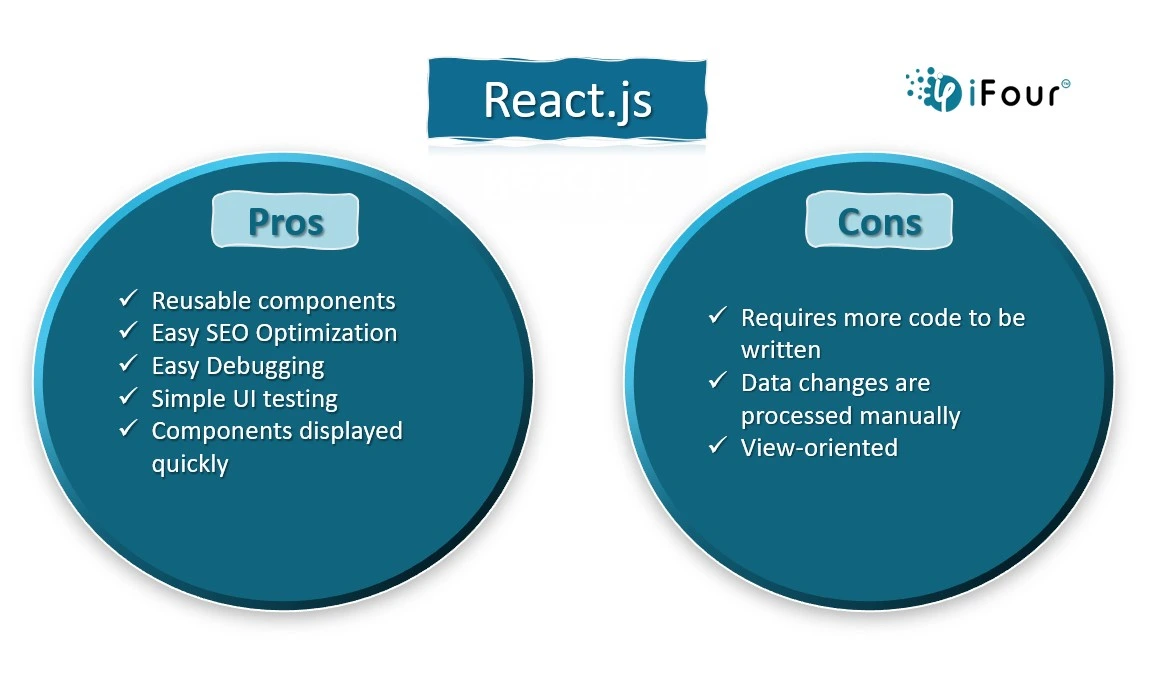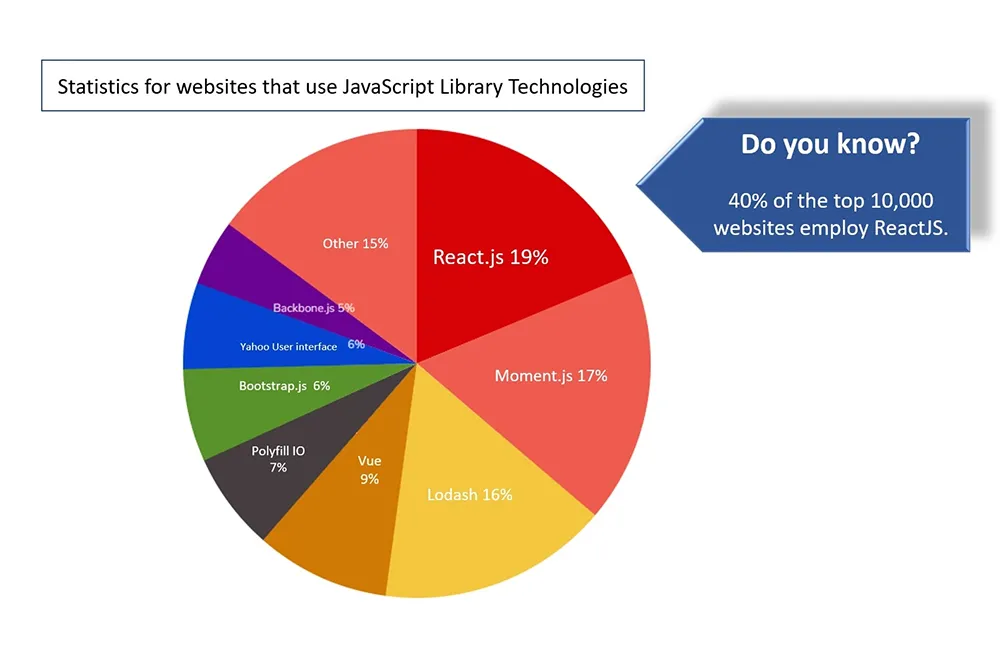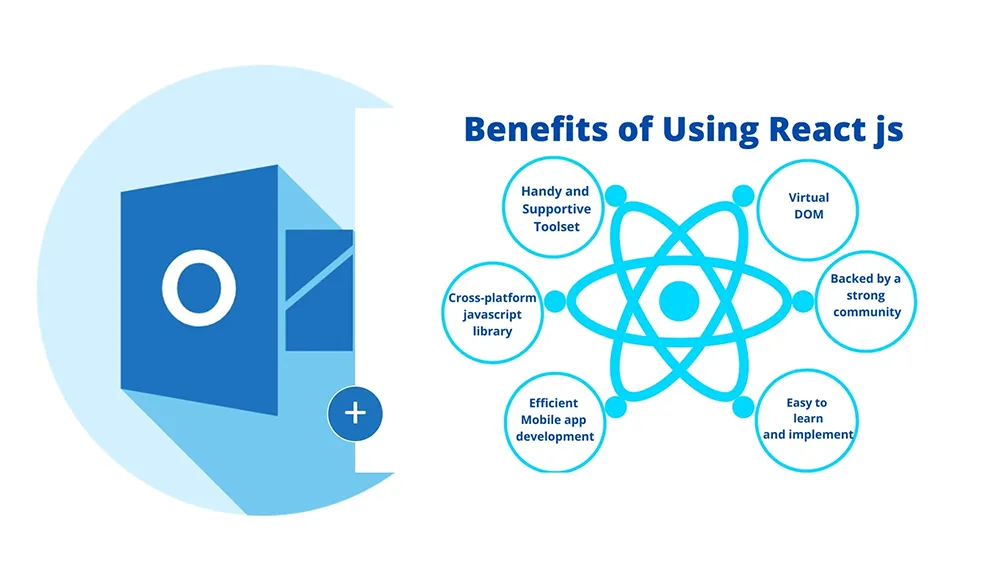In the dynamic world of software development, the fusion of C# and React.js technologies became the hallmark of innovation. C# and React.js, a formidable duo, help businesses break their conventional boundaries and transform their digital processes with matchless versatility and efficiency.
According to a survey done across several sectors, 70% of prominent organizations have used C# and React.js as their core technology for developing cutting-edge software solutions. This number demonstrates not just the broad use of new technologies, but also their revolutionary influence on enterprises.
- C# stands as the backbone, that helps you architect scalable and secure backend systems.
- While React.js assists you in delivering captivating user interfaces to redefine the user experience.
In this blog, we will unveil the significance of C# and React.js, and their potential to take your custom software development initiatives to new heights.
C# in Modern Software Development: Key takeaways
- Versatile backend language
- Object-oriented approach
- Rich standard library
- Secure and scalable
- Known for its strong type-checking.
- Enhanced code reliability.
Embrace innovation and agility with a leading desktop application development company.
React.js in Modern Software Development: Key takeaways
- Dynamic frontend development
- Component-based architecture
- Facilitates code reusability.
- Virtual DOM for performance
- Faster and smoother user interactions.
- Community support and resources
- Cross-platform compatibility
- Appealing UI with enhanced user experience
Why choose C# and React.js for custom software development?
The tandem of C# and React.js brings a harmonious balance to modern software development, effectively managing both client-side dynamism and server-side resilience.
Take a look at the following picture illustrating why C# andReact.js are the ideal combinations for DOT NET software development.

Building Responsive User Interfaces with React.js
In the current realm of .NET CORE software development, creating UIs that captivate users is paramount. Adopt React.js, a JavaScript library that shines in the field of dynamic and responsive user interfaces, revamping the way developers approach front-end development.
1. Component-Based Architecture:
• React.js's component-based architecture promotes a modular strategy. Similar to building blocks, components contain certain UI features and capabilities.
• Because of its modularity, the application can be developed more easily and its components can be seamlessly reused in other portions of the program.
2. Virtual DOM for Efficient Rendering:
• One of React.js's key strengths lies in its use of a Virtual DOM (Document Object Model). Instead of updating the entire DOM when changes occur, React.js smartly updates only the parts that need it.
• Thus, rendering becomes quicker, and the user experience is more seamless, which is especially important for apps that have dynamic content and frequent changes.
Read More: Is C# the right choice for Legal business software development?
3. Declarative Syntax for Clear Code:
• Because React.js encourages a declarative syntax, developers may specify how they want the user interface to appear and React will update the DOM appropriately.
• This clear and concise syntax enhances code readability, making it easier for developers to understand and maintain their codebase.
4. Efficient State Management:
• React.js introduces a straightforward way to manage the state of an application. By maintaining a single source of truth, developers can easily track changes and update the UI accordingly.
• Efficient state management is vital for creating responsive interfaces that adapt to user interactions seamlessly.
5. Real-Time Updates with React.js:
• React.js excels in real-time applications where data changes frequently. Its ability to efficiently update the UI in response to dynamic data ensures users experience up-to-the-moment information without the need for manual refreshes.
6. Thriving Open-Source Community:
• With a vibrant and active open-source community, React.js benefits from constant enhancements, bug fixes, and the introduction of new features.
• Developers can tap into a wealth of resources, libraries, and tools, ensuring they stay on the cutting edge of UI development.
This is how React.js remains the preferred choice with C# in many C# development companies. This technology empowers developers to go beyond static web pages, offering a framework that brings applications to life with interactive and visually appealing user interfaces. Its emphasis on simplicity, efficiency, and a component-based approach makes React.js a go-to choice for those aiming to create engaging user experiences that resonate with modern audiences.

Leveraging C# for Backend Excellence
1. Strong Typing and Safety:
Because of its robust typing system, variables in C# are guaranteed to be declared together with their data types. This lowers the possibility of runtime problems by creating a more reliable and safer codebase.
2. Object-Oriented Paradigm:
C# encourages the usage of classes and objects by the object-oriented programming (OOP) paradigm. This approach facilitates reusability, improves code structure, and makes complicated backend system maintenance easier.
3. Asynchronous Programming:
One of C#'s best features is asynchronous programming. The ability to design bespoke applications that can handle several activities at once, improving performance and responsiveness in situations like managing multiple requests or I/O operations, is what makes this so intriguing.
Turn your vision into reality with an esteemed Mobile app development company.
4. Exception Handling:
Exception handling in C# is robust and structured. Developers can efficiently manage and control exceptions, ensuring that applications gracefully handle unforeseen errors without compromising overall stability.
5. LINQ (Language Integrated Query):
LINQ is a powerful feature that integrates querying directly into the C# language. It simplifies data manipulation and retrieval from various sources, such as databases, collections, and XML, streamlining backend data processing.
6. Scalability:
C# is well-suited for building scalable applications. Its architecture allows developers to design systems that can handle increased workloads smoothly, making it an ideal choice for both small-scale projects and enterprise-level applications.
7. Integration with .NET Framework and .NET CORE:
C# seamlessly integrates with the .NET ecosystem, including the .NET Framework and .NET CORE. This integration provides a rich set of libraries and frameworks, empowering developers with tools for building diverse and feature-rich backend functionalities.
8. Cross-Platform Compatibility:
With the advent of .NET Core, C# has extended its reach beyond the Windows ecosystem. Developers can leverage C# to build cross-platform applications, reaching a broader audience and ensuring flexibility in deployment.
Read More: Software technology trends that impact the Environment industry
9. Security Features:
C# incorporates security features such as Code Access Security (CAS) and robust encryption libraries, fortifying applications against common security threats.
10. Community Support and Documentation:
The C# community is vibrant and supportive. Ample documentation and community-driven resources make it easier for developers to troubleshoot issues, learn new concepts, and stay updated on best practices.
With these powerful C# features, .NET developers may create backend systems that are not just functional but also scalable, maintainable, and secure.
Tips and best practices for integrating C# and React.js
The integration of backend (C#) and frontend (React.js) technologies resembles the artful coordination of symphony. To create a harmonious and efficient development environment, developers must adhere to best practices that ensure seamless collaboration between these two powerful technologies. Let's delve into the guidelines that foster a cohesive union of C# and React.js.
1. Embrace a Component-Based Approach:
Leverage React.js's component-based architecture to break down the frontend into modular components. Align these components with corresponding backend functionalities in C#. This modular approach streamlines software development, enhances code reuse, and simplifies the maintenance of the entire application.
2. Establish Clear Communication Channels:
Ensure effective communication between the C# backend and React.js frontend. Define clear APIs (Application Programming Interfaces) that facilitate data exchange. RESTful APIs or GraphQL can be employed to establish a standardized communication protocol, fostering a smooth and predictable interaction.
3. Leverage State Management Wisely:
Thoughtfully manage the state of the application. While React.js excels in frontend state management, ensure that critical state information is appropriately handled on the backend, especially for tasks like user authentication, authorization, and managing global application state.
Increase your business efficiency with a leading WPF development company.
4. Implement Asynchronous Operations:
Harness C#'s asynchronous capabilities to optimize data fetching and processing. When React.js components require data from the backend, asynchronous operations ensure responsiveness without blocking the user interface. Employ async/await patterns judiciously to handle asynchronous calls efficiently.
5. Secure Your Application:
Prioritize security throughout the integration. Implement secure authentication mechanisms to protect sensitive data during communication. Employ HTTPS for secure data transmission and validate user inputs on both frontend and backend to guard against common security vulnerabilities.
6. Cross-Origin Resource Sharing (CORS):
Handle CORS configurations diligently. Cross-Origin Resource Sharing can pose challenges when integrating frontend and backend hosted on different domains. Set up CORS policies on the backend to explicitly define which domains are allowed to access resources, ensuring a secure and controlled environment.
7. Version Control and Continuous Integration:
Implement version control systems (e.g., Git) for both backend and frontend codebases. Set up continuous integration pipelines to automate the testing and deployment processes. This ensures that changes are systematically validated and deployed, reducing integration hiccups.
Read More: What’s the Future of WPF in 2024
8. Establish Development Environments:
Create consistent development environments for both C# and React.js. Utilize tools like Docker to containerize applications, ensuring that they run consistently across various development machines. This minimizes the "it works on my machine" issue, promoting a seamless development experience.
9. Prioritize Error Handling and Logging:
Implement robust error-handling mechanisms on both the backend and frontend. Ensure that error messages are informative yet secure, revealing minimal sensitive information. Implement comprehensive logging to facilitate debugging and issue resolution.
10. Foster Collaboration and Documentation
Cultivate collaboration between backend and frontend developers. Maintain thorough documentation for APIs, data structures, and coding conventions. This ensures that team members can easily understand and contribute to both ends of the application.
By adhering to these best practices, developers can seamlessly integrate C# and React.js, transforming the development process into a symphony of efficiency and collaboration. The result is an application that not only functions seamlessly but also evolves gracefully over time.
Conclusion: React.js and C# for custom software development
In this blog of bespoke software development with C# and React.js, we've discovered a powerful combination for creating not just functional but engaging applications. React.js as the creative painter of the frontend and C# as the expert sculptor of the backend, work together perfectly to craft dynamic digital experiences.
We've learned the features of React.js and C# and explored the key principles like building modularly, effective communication, and smart data management. These are the key ingredients for creating responsive, scalable, and easily maintainable software. By incorporating security measures and collaborative practices, developers enhance their skills, producing standout digital experiences.
The source of content is here: https://www.ifourtechnolab.com.au/blog/how-to-ace-your-software-development-using-c-and-react-js




.jpg)

.jpg)
.jpg)